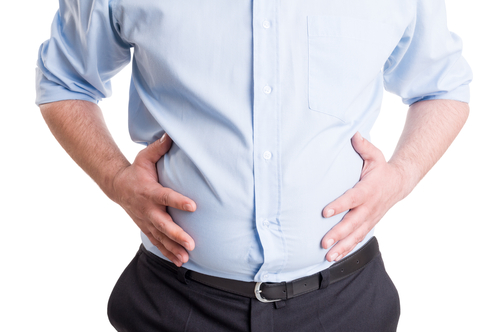Abdominal bloating occurs when the abdomen fills with air or gas. This may cause the area to appear larger. The abdomen may feel hard or tight to the touch. The condition can cause discomfort and pain.

Abdominal bloating occurs when the abdomen fills with air or gas. This may cause the area to appear larger. The abdomen may feel hard or tight to the touch. The condition can cause discomfort and pain.
Most of the time, abdominal bloating and pain occur due to:
This kind of bloating or pain is usually normal and will go away within two hours. In cases of the stomach flu, you may feel intense pain or bloating that comes and goes before each episode of vomiting or diarrhea. Stomach viruses usually go away with rest and home care.
Abdominal bloating and lower abdominal pain can also occur due to:
Conditions such as acid reflux and indigestion can cause abdominal bloating and pain. In these cases, the pain is typically in the stomach’s upper portion, not the lower part.
DIAGNOSIS
If your doctor performs a physical exam and then suspects a medical condition is causing your abdominal bloating or pain, they’ll run various medical tests. The types of tests they order will depend on the physical exam findings and your medical history.
Some common tests for abdominal problems include the following:
Your doctor may use one or more imaging technologies to check for structural abnormalities in your abdominal organs. These may include X-rays, CT and MRI scans, and an ultrasound, which involves applying a handheld device that emits sound waves to the skin’s surface to see inside the body.
TREATMENTS
Treatments for abdominal bloating and pain will address the underlying condition. Examples may include antibiotics for infections. If an intestinal obstruction is the cause, your doctor may prescribe medications to encourage intestinal movement. Surgery may be necessary in severe and rare instances.
Home care
Here are some suggestions for home care:
Overview and FactsTypes and SymptomsDiagnosis & MedicationsOverview and Facts Referred pain is a phenomenon where pain is perceived at a [...]
Overview and FactsTypes and SymptomsDiagnosis & MedicationsOverview and Facts Quinoline yellow is a synthetic food colorant commonly used in the [...]
Overview and FactsTypes and SymptomsDiagnosis & MedicationsOverview and Facts Pneumothorax is a condition characterized by the presence of air in [...]